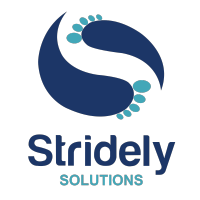Thought Leader – Harjinder Singh Sabharwal
In today’s digital landscape, Financial Analysis is essential for businesses to assess financial performance and drive sustainable growth. Simply put, it helps organizations understand their financial health, pinpoint areas to reduce costs, and maximize revenue for higher profits.
Implementing profitability analysis and optimization solutions offers numerous benefits, from optimizing spending to improving strategic decision-making. This blog provides a comprehensive guide on profitability analysis—covering its benefits, challenges, tools, and implementation—to help you get started on enhancing your business profitability today.
What is Profitability Analysis?
Profitability analysis looks beyond simple net profit calculations for more detailed insights into an organization’s financial data. It will also help identify expansion opportunities and market trends and it will give decision-makers the data-driven information they need to decide on the company’s direction, Product performance, Manufacturing Unit performance, Customer Insights, Geographical sales distribution, and many more focused areas.
Modeling Business to Success- Profitability Analysis
Analyzing business profit is beyond just having a financial overview, it enables organizations to assess future performance, optimize existing infrastructure, and design strategic initiatives to drive business growth. The key benefits of Cost Analysis are as follows:
- Informed Decision-Making: Other data that helps manage strategic choices, like product expansion or cost cutting. It can also identify which Products / Customers / Regions are more profitable vs less profitable.
- Identifying Opportunities: Recognizes segments or products that are profitable, promoting growth. Informs capital investments and risk assessment.
- Optimum Resource Allocation: Assists in directing resources to the most profitable areas. Manufacturing can be shifted to low-cost plants. Logistics can be planned properly based on customer geographical locations to improve distribution costs.
- Enhanced Financial Planning: Aids in setting realistic budgets and targets based on trends. Aids in evaluating business model viability and strategic market positioning.
- Operational Efficiency: Profitability analysis with the best profitability consulting services identifies production or distribution inefficiencies to boost profitability.
- Performance Evaluation: Assess business performance regarding profit compared to revenue, costs, and investments.
- Stakeholder Communication: Enhances relations by providing clear insights to investors and Board Members.
- Market Positioning: Compare our business profitability with competitors to find strengths and weaknesses. Also, we can make a comparison with Industry benchmark Revenue & Cost standards.
Tools for Profitability Analysis
Various tools help businesses with financial performance analysis. Some popular options include:
- Excel/Google Sheets: Most commonly and widely used for financial modeling; customizable for small businesses. It can also be used for small data set cleaning, but it cannot handle large data sets and complex calculations.
- SQL / Python / SSIS / Alteryx: These are some ETL (Extract, Transform, Load) tools used widely for handling large data sets, organizing them, integrating, performing calculations, and exporting in specific formats for input into visualization tools
- Tableau / Power BI: These are commonly used visualization tools for advanced analytics and Interactive dashboards. Finance leadership and CXOs can use profitability analysis and optimization solution tools to predict future outcomes.
- NetSuite / SAP / Microsoft Dynamics 365: Modern ERP’s & Analytics Integrated business software for larger enterprises. Can be customized but has some limitations for Analytics
- SAS Analytics / IBM Cognos Analytics: Comprehensive business intelligence & Analytics tool for larger organizations.
- Profit Edge: It offers in-depth analytics for enterprises and is tailor-made as per business needs. Can be used in combination with other tools. It enables Enterprise to make data-driven decisions. It can also be used even where there are multiple ERPs involved, and large data needs to be integrated into one common data warehouse and then apply common cost allocation logic or certain complex calculations.
Steps of Profitability Analysis for Improved Performance
- Define Objectives & Scope
The first step in cost analysis is to define the objectives and scope to ensure a meaningful evaluation. Identify the key business areas for analysis, such as customer profitability or business segment evaluation with data analytics services. Then, outline the scope, including specific products, services, or regions to be analysed. - Assemble a Cross-Functional Team
Deploy a profitability analysis team with expertise in finance, accounting, sales, marketing, and other relevant departments. The team will be responsible for relevant data collection, conducting financial assessments, and collaborating with decision-makers to ensure an accurate profitability analysis. - Gather Data
Collect financial data across the business, including sales figures, historical financial records, asset costs, and other key financial metrics. Ensure that data sources are reliable, eliminating inconsistencies and duplicates. Integrate data from various sources into a single, consolidated dataset for analysis. - Choose Methodology
Select the most suitable cost analysis method. Businesses can opt for approaches such as activity-based costing, customer profitability analysis, product line evaluation, or region-based assessments, depending on their strategic goals. - Calculate Profitability Ratios
Identify and compute key profitability analysis metrics for your business. This can include break-even analysis, ratio analysis, industry profitability benchmarks, and qualitative analytics. These ratios help businesses determine cost efficiency and overall financial health. - Use Analytical Tools
Leverage advanced data and analytics tools to simplify the overall business cost management process. Software such as Excel, Tableau, Power BI, and Qlik can enhance data visualization, while Python and SAS can assist in complex financial modeling and calculations. Use charts and graphs to present findings in an intuitive and accessible format. - Communicate Findings
Prepare comprehensive reports from the cost analysis reports comprising the methodology, analysis, and recommendations to be implemented. The report assists decision-makers in developing required action plans addressing profitability challenges, mitigating risks, and capitalizing on opportunities. - Monitor & Review
Continuously review the impact of the profitability analysis and optimizing solution at frequent intervals. Refine the analysis process based on feedback, evolving business strategies, and market changes. Adjust methodologies as needed to maintain accuracy and relevance
Critical Cost Components of Profitability Analysis
- Software and Tools: Costs for business intelligence and ERP systems can vary significantly based on the Enterprise’s volume of data and its business size.
- Data Management: Setting up data warehousing and data cleansing activities. It involves substantial expenses as central data management is needed for multi-ERP businesses which have many Business units under one parent company but run on various ERPs standalone. The data warehouse helps in data centralization for a common view by the corporate FP&A Team.
- Profitability Consulting Services: Experienced consultants and employee training costs based on the project need to be considered.
- Personnel Costs: Salaries for project managers and analysts also add to the total cost.
- Timeframe: Longer projects incur ongoing personnel and operational costs; hence project timeline is important to decide.
- Ongoing Maintenance: Continuous support and maintenance fees also contribute to total costs.
Key Challenges Profitability Analysis
- Data Limitations: Poor data quality can result in misleading outcomes. Hence it is important to understand the data source, do proper data cleaning, and then start working on that data. Because Incorrect data will lead to incorrect information.
- Improper Project Implementation: While implementing profitability analysis and optimization solutions it is important to take care of a few things like the use of proper software/tools to handle the data, a qualified and experienced team to work on the project, team & management both should be aligned on the project outcome. If any of these things are not done correctly, then it could cause difficulties in project outcome.
Automating Profitability Analysis for Quick Insights
Implementing a financial analysis framework simplifies the extensive process of analyzing revenue and costs. The pre-built dashboards unify all critical data in one place, making it more accessible. This framework empowers businesses to take complete control over financial performance, identify gaps, and gain a multi-dimensional view of different business areas, regions, customers, and more—enabling better performance adjustments for improved outcomes.
Leverage Stridely Solutions’ built-in profitability framework ProfitEdge to gain valuable profit margin insights. Designed to transform your business performance, ProfitEdge helps you identify profit sources and take strategic actions to enhance profitability.
Importance of Profitability Analysis for Enterprises
Most of the Global 500 companies and many other large-size companies invest significantly in profitability analysis and optimization solutions through tools and consulting services. This analysis is crucial for businesses to understand operational efficiency and financial health. It is vital for improving financial performance, competitive standing, and Customer Analytics and provides valuable insights for informed decision-making. By following the structured approach leadership teams can strategize effectively and enhance overall business profitability.


